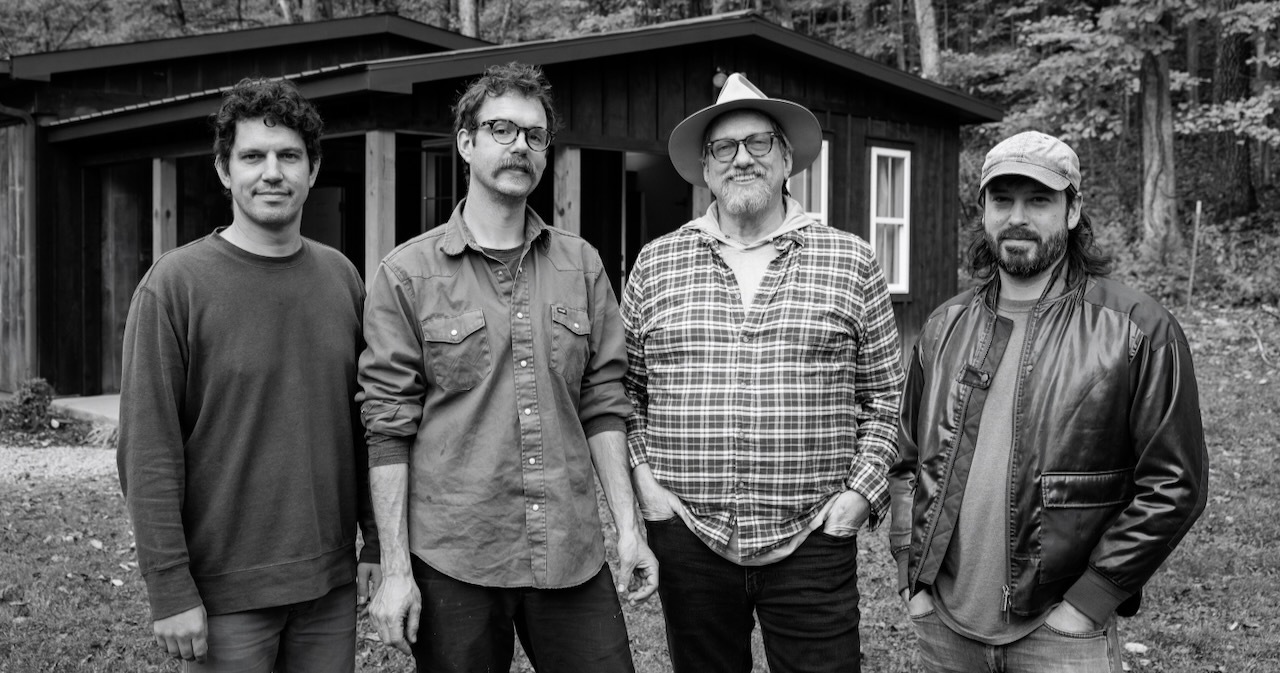Undefinable by a single era, genre, or instrument, Jerry Douglas’ otherworldly picking prowess on Dobro and lap steel guitar knows no bounds. Whether it’s running through Flatt & Scruggs songs with the Earls of Leicester, kicking up covers like The Beatles’ “While My Guitar Gently Weeps,” or conjuring up jazz-like improv jams, the sixteen-time GRAMMY winning musician has a way of drawing the listener in with his tasteful tunes.
That trend continues on The Set, his first studio album since 2017 – although he did stay busy producing records for Molly Tuttle, Steep Canyon Rangers, John Hiatt, Cris Jacobs, and others during the time in between. Released on September 20, the record captures the sound of Douglas’ live set with his current band – Daniel Kimbro (bass), Christian Sedelmyer (violin), and multi-instrumentalist Mike Seal – with a mix of new and original compositions, reworkings of older songs from his catalog, a couple of intriguing covers, and even a concerto.
BGS caught up with Douglas ahead of his tour dates in support of the new record – and his induction into the Bluegrass Music Hall of Fame this week – to discuss the motivation behind The Set, the similarities between Molly Tuttle and Alison Krauss, and much more.
This is your first album in over seven years. What was your motivation for returning to the studio after such a large gap?
Jerry Douglas: I’ve been doing records for everyone else those past seven years. [Laughs] We’d go out and play a show and people would come up afterward and ask where they could find this song or that song. It got me thinking, since the songs I play live are scattered across many different records — some of which are out of print — that it’d be a good idea to get them all into one place, one album. It’s not a compilation record by any means, it’s just how I love to hear these songs now.
Speaking of how you love to hear these songs now, you’ve recorded many of them in the past. This includes “From Ankara To Izmir,” which you first recorded on lap steel before opting for the Dobro this time. What led to that shift?
When you first write a song you don’t know it, because you haven’t lived with it yet. You need to play it about 100 times and really flesh it out to see what all’s in there. When I originally recorded “From Ankara To Izmir” in 1987 for the MCA Master Series we had a much bigger, bolder band around it. However, the more I got to playing it out live the better the Dobro felt on it. It allows me to be more dynamic with the song, which I also cut with drums in 1993 before switching things up and leaving them out this time.
We actually haven’t used drums since the record I made with John Hiatt in 2021. He didn’t want them, so we used the rest of my band… it felt great having all that space the drums usually filled back, so we just continued as a four-piece after that. It’s gone on to inform a lot of the music on this record, not just with that one song.
I love the evolution that songs can take over time, whether it’s something as simple as changing out one instrument like you’ve done a couple times here or going from a full band to something that’s solo acoustic. Different arrangements breathe completely different life into a song, and your record is a great example of that.
Even Miles Davis recorded a lot of his songs two or three times with different bands. He wanted to hear them with the band he was with at that moment, which all included different people, personalities, characteristics, and playing styles. Music is meant to evolve over time as influences and circumstances change. Songs are traveling through their life collecting little pieces to add to themselves just like the rest of us do.
That room to experiment is only expanded with your band, who you’ve been with now for eight years. How did the chemistry you have with them help to drive the sonic exploration behind The Set?
Like you said, we’ve been together for a long time now. We’ve been everywhere together and have become good at picking up nonverbal cues from one another. A lot of times I’ll just give Daniel a look and he knows what to do. That trust allows us the freedom to experiment and keep things fresh for ourselves, which in turn keeps it fresh for the audience as well, whom we don’t ever want to leave behind.
That same attention to detail can be felt in the album artwork as well, which I understand comes from a connection you made across the pond while there for the Transatlantic Sessions?
Yes. William Matthews is a famous western watercolor artist who was in Scotland with me when we started rehearsing for the Transatlantic Sessions right after COVID. We typically tour the country at the end of January and into February for 10 days playing the entire show and William was following us around painting. One day I walked into his hotel room and his paintings were all the way around the wall. One of them was of Doune Castle – seen in both Monty Python & The Holy Grail and Game Of Thrones – that, unbeknownst to us at the time, ended up becoming The Set’s cover art.
Earlier we touched on all the producing work you’ve been up to lately. One of those has been Molly Tuttle, who you’ve worked with on her past two GRAMMY-winning albums. Given your close ties to another trailblazing woman of bluegrass, Alison Krauss, do you notice any similarities between the two and the approach they have to their craft?
They’re both amazing singers. I learned a long time ago that when Alison tells me she can do better, she does, and Molly’s the same. Both have a way of exceeding my expectations on a take when I thought they couldn’t do better than the one just before it, but every time the new one turns out head and shoulders above the one that I had been satisfied with. It’s taught me to always trust the artist no matter who it is I’m working with.
In that same sense, I think about Earls of Leicester as Flatt & Scruggs – what if they’d said “wait a minute” and gone back in [to the studio] to change one little thing? When you’re recording, everything happens so fast that you can come back to it and go in a completely different direction. That’s what I love so much about my new record, even some of the mistakes that I made on it aren’t really mistakes, they’re just different directions.
What has music taught you about yourself?
I’m an introvert who can speak in front of thousands of people and have a good time at a party, but when I’m alone I’m really alone, but in a positive way. It’s like having two lives, but I’m not acting in either one of them. What a privilege it is to be true to yourself and have a full life at the same time. I get to go out and play music, then come home and fix the faucet.
Lead Image: Madison Thorn; Alternate Image: Scott Simontacchi.


